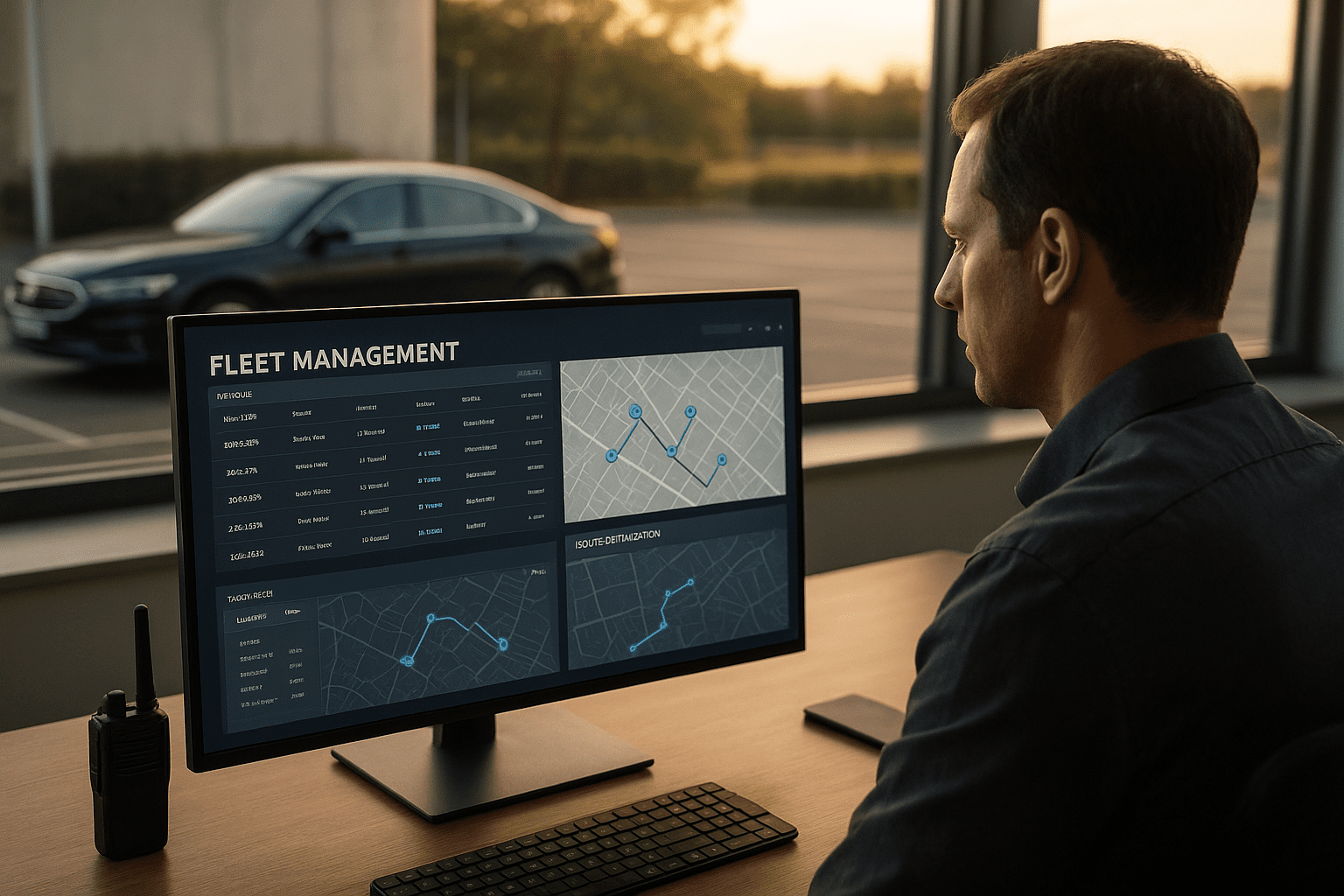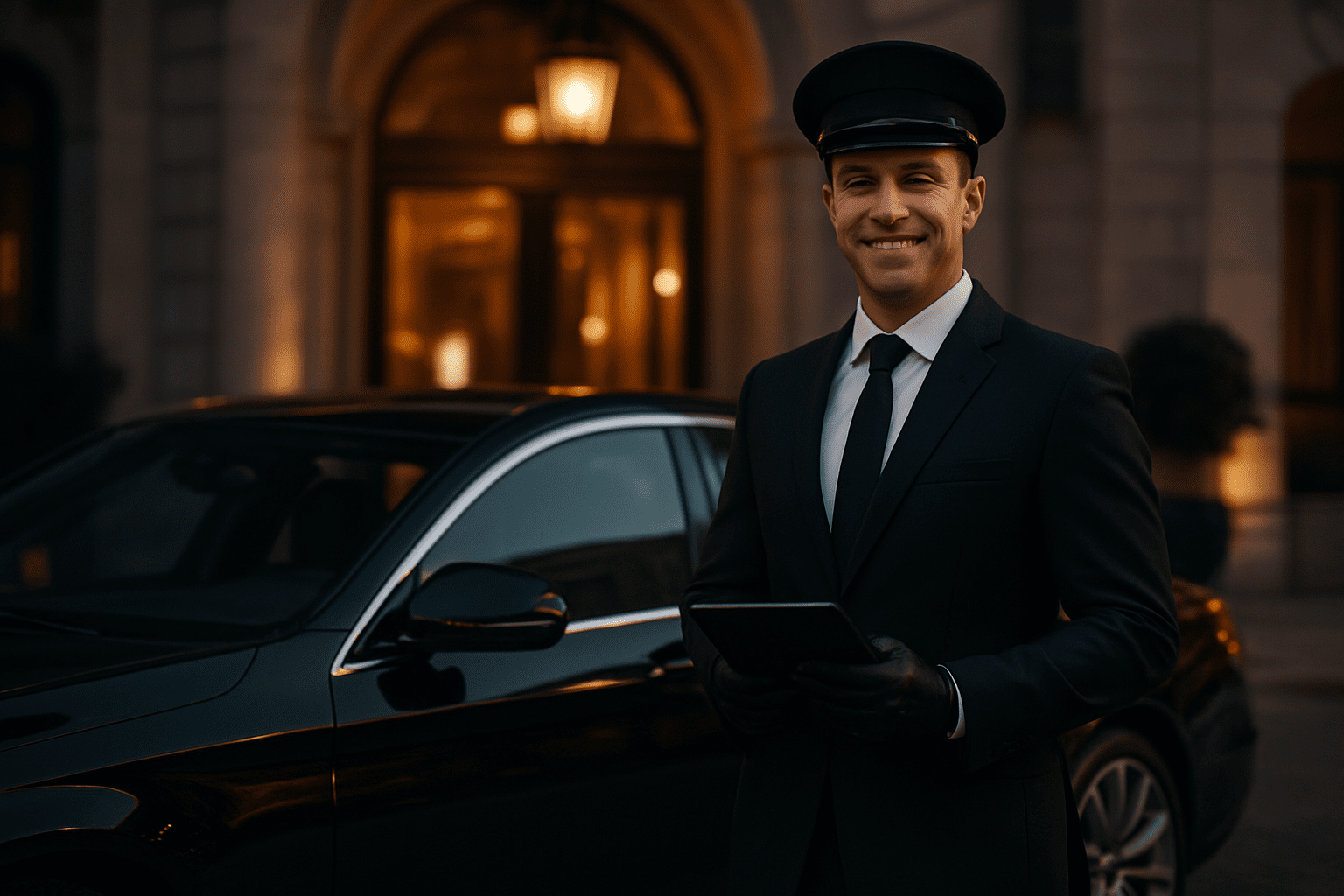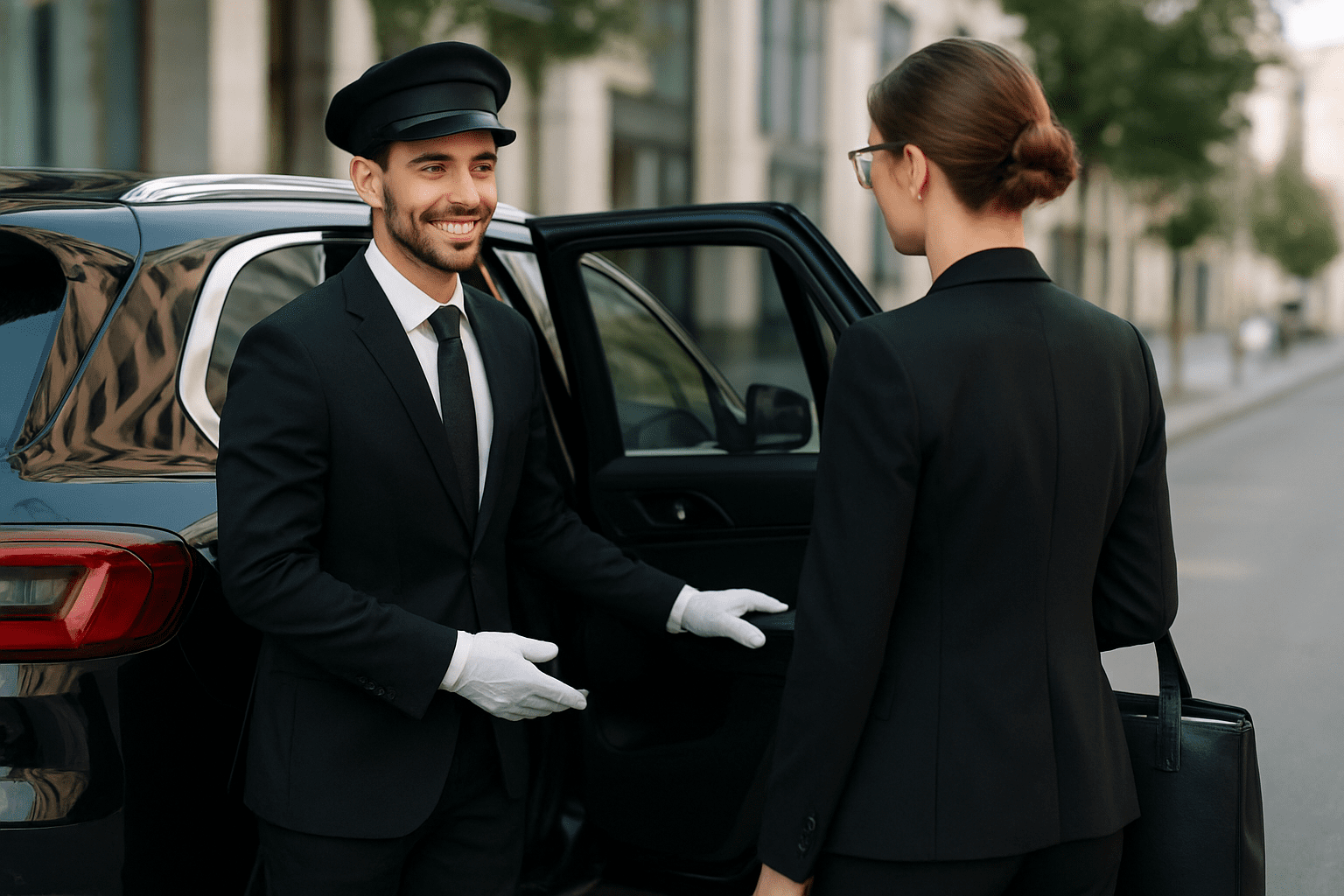Introduction
In the high-stakes world of luxury and executive transport, the role of a professional chauffeur extends far beyond simply driving from point A to point B. Today’s clients expect an experience marked by precision, discretion, and elegance. Whether it’s a corporate executive rushing to a meeting or a couple heading to a special event in a limousine, every interaction shapes their perception of the service.
This is where the professional chauffeurs etiquette essentials come into play. These unspoken rules and refined behaviors distinguish an average driver from a true professional. From attire and punctuality to communication and crisis management, mastering these nuances ensures a chauffeur doesn’t just meet expectations—but exceeds them.
1. First Impressions Last: Appearance and Presentation
Issue: When it comes to luxury transport, the first impression a chauffeur makes can set the tone for the entire customer experience. Clients expect a high level of professionalism, and how a chauffeur presents themselves—right from their uniform to personal hygiene—speaks volumes about the brand they represent. Inconsistent appearance standards can tarnish a dispatch or limousine service’s reputation, potentially driving away high-value clients.
Solutions:
A chauffeur’s attire should be impeccably clean, well-fitted, and reflect the branding of the limousine or executive transport service. For instance, most companies opt for black or navy suits, white shirts, conservative ties, and polished shoes. This consistent professional look builds immediate trust and confidence.
Personal grooming must not be overlooked. Neatly trimmed facial hair, fresh breath, and clean hands are subtle but essential parts of professional chauffeurs etiquette essentials. Since chauffeurs often deal with elite clients, anything less than pristine grooming may be deemed disrespectful.
Beyond clothing and grooming, presentation includes posture, confidence, and body language. Standing upright, offering a firm handshake when appropriate, and making polite eye contact reinforces the chauffeur’s role as a courteous and competent service provider. This balance of professional appearance and demeanor helps limousine and dispatch services deliver consistent quality.
2. Punctuality is Non-Negotiable: The Time Management Factor
Issue: Time is money—especially for business travelers and high-end clients using executive transport services. A late chauffeur, regardless of the reason, can ruin schedules and cause unnecessary stress for passengers. Unfortunately, some chauffeurs underestimate how vital timeliness is in maintaining customer trust.
Solutions:
Being early should be standard practice. Arriving at least 10–15 minutes before the scheduled time not only ensures punctuality but also provides a buffer for unforeseen events such as traffic or last-minute route changes. This proactive approach is one of the professional chauffeurs etiquette essentials that clients deeply appreciate.
Using dispatch technology can also help chauffeurs manage time better. With real-time updates and route optimization tools, drivers can respond swiftly to delays or changes in the schedule. Limousine services that utilize advanced dispatch systems show clients they prioritize their time.
Furthermore, chauffeurs should prepare for each assignment by checking maps, weather forecasts, and special events that may impact traffic. Investing time into preparation reflects a strong work ethic and positions the chauffeur—and the company—as reliable and professional.
3. Communication Skills: Speak with Class
Issue: Poor communication can lead to misunderstandings and discomfort during the ride. From inappropriate small talk to misinterpreting passenger instructions, the lack of refined communication can diminish the luxury experience. Many chauffeurs are unaware that verbal etiquette is as important as driving skill.
Solutions:
Clear, concise, and respectful language is a cornerstone of professional chauffeurs etiquette essentials. Whether confirming a pickup location or offering a polite greeting, chauffeurs should be articulate and pleasant. They should also avoid slang or overly casual language that might seem unprofessional.
Listening is as critical as speaking. Chauffeurs must practice active listening to fully understand client instructions or preferences. If a passenger prefers silence, the chauffeur should adapt accordingly. Likewise, if a client initiates a conversation, the response should be engaging yet discreet.
Training sessions focused on customer communication—covering tone, vocabulary, and situation-based dialogue—are valuable. Companies can include these in chauffeur onboarding processes to enhance service quality, particularly for dispatch and limousine services.
4. Confidentiality is Key: Respecting Client Privacy
Issue: In luxury and corporate transport, clients often discuss sensitive information during transit. Loose talk or accidental sharing of passenger details can lead to major privacy violations, eroding trust and damaging the company’s brand.
Solutions:
Every chauffeur must understand that client privacy is paramount. As part of the professional chauffeurs etiquette essentials, discretion is not just expected—it’s demanded. Companies should establish clear confidentiality policies and make them part of the employment agreement.
Drivers must never disclose who they are transporting or share trip details on social media or with friends and family. Even innocent comments can breach confidentiality.
Advanced dispatch systems can help maintain privacy by limiting data access to authorized personnel only. Moreover, companies should encourage passengers to offer feedback about their comfort with chauffeur behavior, including privacy and discretion.
5. Vehicle Readiness: Cleanliness and Maintenance
Issue: A clean and well-maintained vehicle is essential for client satisfaction. Dirty interiors, unpleasant odors, or mechanical failures can quickly lead to poor reviews and loss of repeat business. Some chauffeurs don’t prioritize vehicle upkeep, assuming it’s a secondary concern.
Solutions:
Vehicle cleanliness should be a daily ritual. Cars must be vacuumed, wiped down, and deodorized after every trip. From spotless windows to clean floor mats, no detail should be overlooked. Clean vehicles reflect the standards of the chauffeur and the entire limousine service.
Maintenance checks are equally vital. Regular oil changes, brake inspections, and tire checks help prevent breakdowns. Dispatch services that maintain digital maintenance logs can better track vehicle readiness and assign rides accordingly.
Clients notice everything—from the temperature to how quietly the doors close. Chauffeurs must check every setting before pickup to ensure a smooth experience. Such attention to detail is a core part of professional chauffeurs etiquette essentials.
6. Navigational Expertise: Knowing the Roads
Issue: Relying solely on GPS navigation can be risky, especially during high-profile events or in restricted areas. A chauffeur who gets lost or takes the wrong route can cause delays and appear incompetent, affecting the entire reputation of the dispatch or limousine service.
Solutions:
Professional chauffeurs must be intimately familiar with their service area. This includes knowing shortcuts, traffic-prone zones, construction areas, and VIP routes. Local knowledge adds immense value and saves time in emergencies.
Chauffeurs should always pre-plan routes before picking up the client. Using both GPS and real-world awareness provides backup in case of software glitches. This dual strategy is a must-have in professional chauffeurs etiquette essentials.
Advanced dispatch systems with real-time updates also enhance route accuracy. Pairing this with chauffeur training in navigational awareness helps companies deliver seamless rides and stand out in competitive markets.
7. Client Comfort: Anticipating Passenger Needs
Issue: While some chauffeurs focus only on driving, the best ones go the extra mile to ensure passenger comfort. Ignoring client preferences like climate control, music, or refreshments can make the ride feel generic and impersonal.
Solutions:
Chauffeurs should always begin by offering amenities politely—such as bottled water, phone charging, or music options. This creates a welcoming atmosphere. Remembering previous client preferences can earn trust and foster loyalty.
Professional chauffeurs etiquette essentials also include being observant. If a passenger appears cold, the driver might adjust the temperature without being prompted. These small actions transform an ordinary trip into a luxurious experience.
Dispatch and limousine services can track customer preferences using CRM software. When chauffeurs receive this data before pickups, they can personalize service, creating a memorable journey each time.
8. Crisis Management: Handling Emergencies with Poise
Issue: Emergencies such as medical issues, vehicle breakdowns, or accidents can occur unexpectedly. Inexperienced chauffeurs may panic, making the situation worse. Poor crisis handling can result in injury, liability, or legal complications.
Solutions:
Crisis readiness is among the top professional chauffeurs etiquette essentials. Chauffeurs should be trained in first aid, basic vehicle repair, and emergency communication protocols. This training builds confidence and ensures fast, appropriate reactions.
Dispatch services must have emergency support systems in place. If a vehicle breaks down, a backup car should be dispatched immediately. GPS tracking and emergency contact features should be standard across the platform.
Clients appreciate professionalism during tense situations. Chauffeurs who remain calm and courteous under pressure not only protect passengers but also uphold the reputation of their limousine service.
9. Cultural Sensitivity and Diversity Awareness
Issue: Chauffeurs serve a diverse clientele, including international visitors and people from various cultural backgrounds. Ignorance or cultural insensitivity—such as inappropriate gestures or conversation topics—can deeply offend clients.
Solutions:
Chauffeurs should receive training in cultural awareness, which is a growing part of professional chauffeurs etiquette essentials. They must learn basic etiquette across different cultures, such as greetings, eye contact rules, and gestures to avoid.
Being respectful of religious or cultural attire and dietary restrictions (if offering refreshments) is also important. Understanding language preferences and using translation apps or tools when necessary can help bridge communication gaps.
Limousine and dispatch services operating internationally should invest in multilingual apps, cultural training workshops, and client preference profiles to serve global clients better and avoid awkward situations.
10. Continuous Improvement: Feedback and Training
Issue: Many chauffeurs assume that once they know how to drive, their job is complete. However, customer expectations evolve. Without continuous training, even experienced chauffeurs may fall short of industry standards.
Solutions:
Chauffeurs should undergo periodic training to refresh their skills in etiquette, defensive driving, customer service, and technology use. These training sessions ensure alignment with the latest professional chauffeurs etiquette essentials.
Collecting feedback from clients helps identify areas for improvement. Dispatch platforms can include automated post-trip surveys, helping services monitor chauffeur performance without being intrusive.
Saztech Solutions, for instance, offers dispatch and customer support solutions that include real-time performance analytics and integrated training modules. Leveraging such platforms can significantly enhance chauffeur professionalism and service delivery.
Conclusion
Professional chauffeurs etiquette essentials are more than just a list of rules—they’re the foundation of a premium customer experience. From first impressions to crisis management, each point plays a vital role in distinguishing high-end services from the rest.
Balancing these essentials with dispatch operations and client expectations requires careful planning, ongoing training, and the right technology. Companies that invest in etiquette standards will not only satisfy clients but also build long-term brand loyalty in the luxury transport space.
Home | About Us | Pricing | Get Started | FAQ | Dispatch Daily | Contact Us
WhatsApp | Facebook | LinkedIn




Leave a Reply